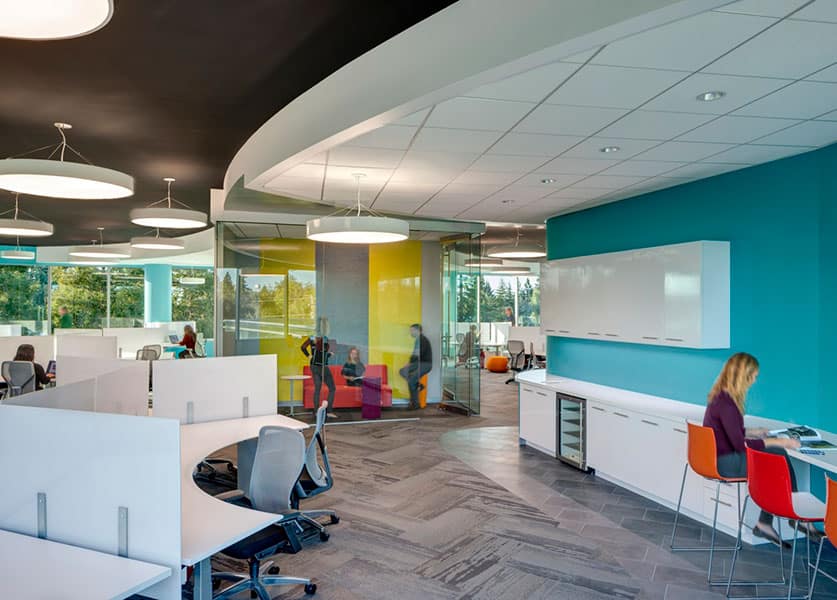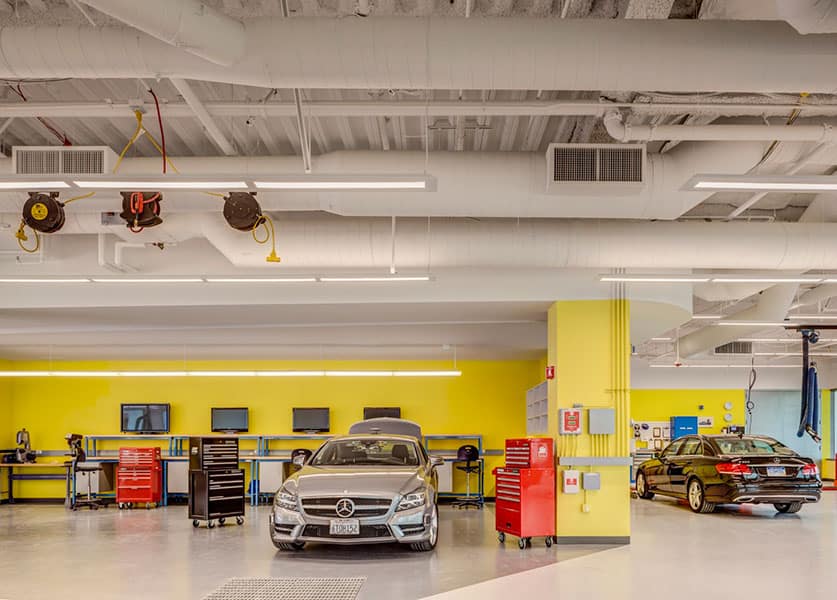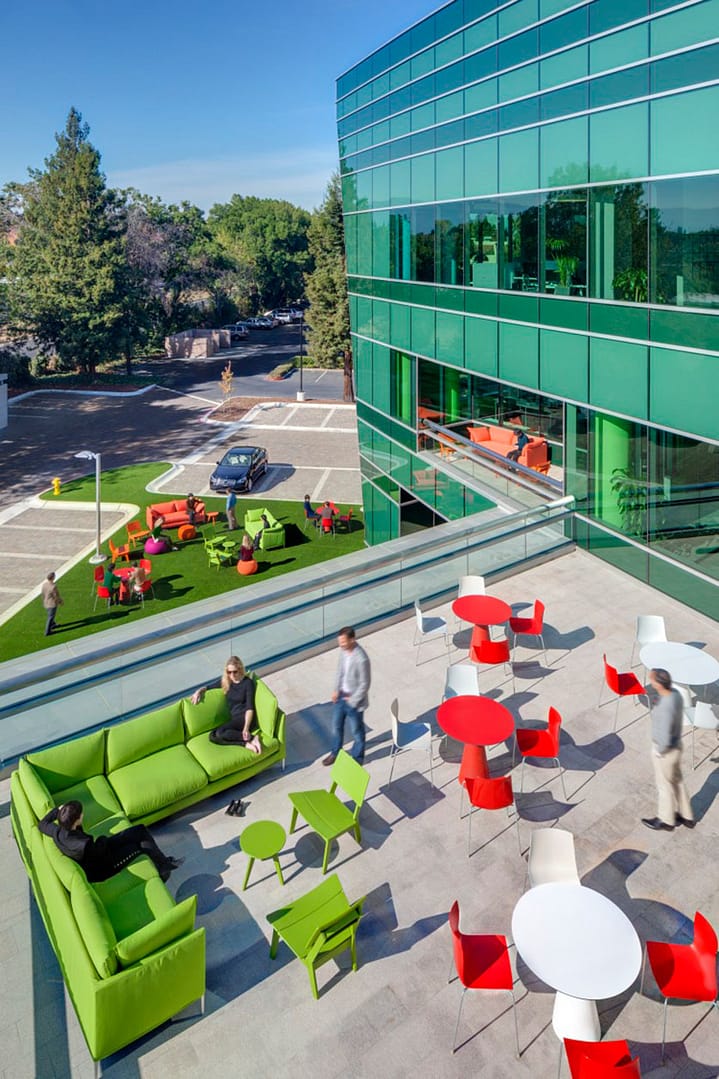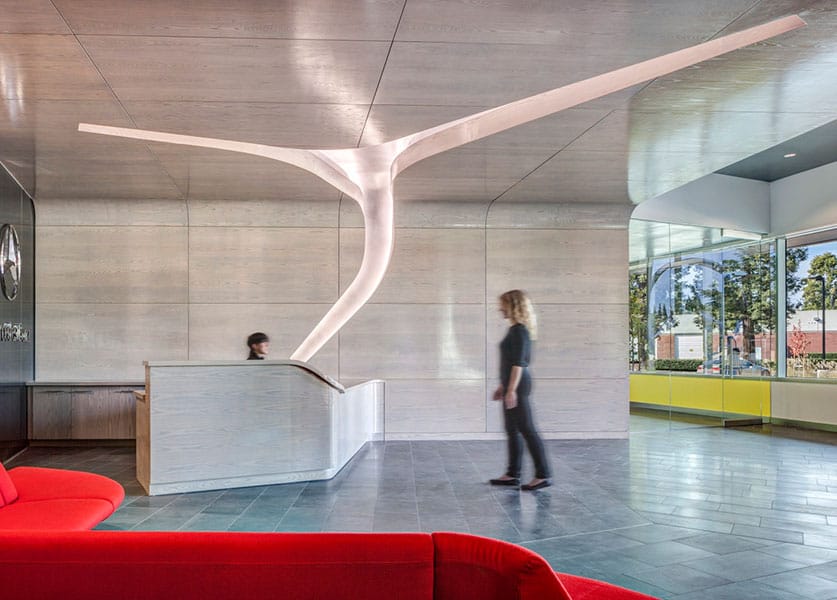
For a work environment that supports collaboration, the software engineering arm of Mercedes Benz sought a collaborative workspace that reflected its distinct culture. In its current state, the software engineers and developers at Mercedes Benz Research & Development North America (MBRDNA) had grown and expanded into two facilities that were several blocks apart in a research park of Palo Alto, California. Company leadership wanted a space that reflected culture that values the key aspects of the Mercedes brand—elegance, sophistication, forward thinking, and luxury—and also saw a move as the ideal opportunity to refine its workflow and environmental utilization. Key to the workforce was the ability to collaborate easily and quickly while retaining the ability to isolate teams and control their respective environments.
For Mercedes, IA’s design strategy team engaged the end user in a series of information-gathering activities, which included leadership focus groups, staff focus groups, program interviews, and rapid prototyping. Observation was key to discovering environmental work-arounds–or identifying what wasn’t effective to streamlined work flows, such as panels that are too high so end users are constantly popping up to speak to their neighbors—and workplace inefficiencies that were not apparent to the end users. After an extensive investigative period, all findings were discussed with the client as a project team, so ideas could be tested and concepts developed were directly tied to the goals of the company.
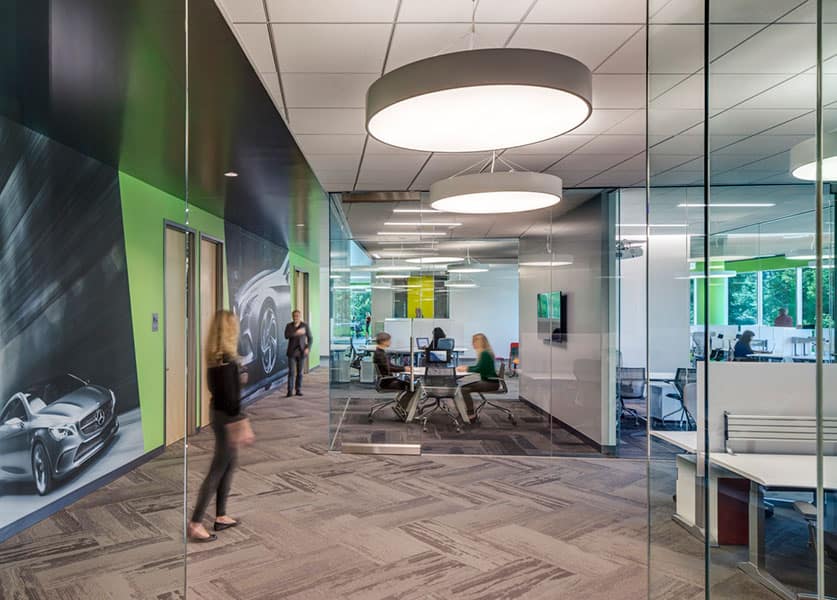
The solution developed is a series of working team cells, each with their own huddle and conference spaces. These spaces can open to circulation flow, or enclose with sliding glass space dividers. The glass enclosure system allows the workspace to feel transparent and open, yet enclosed and private as team’s desire throughout their work process. Glass, stainless steel, and vibrant colors reflect the luxurious look and feel of the Mercedes Benz brand. As an added bonus, outdoor balconies and patios extend the collaborative workspace outdoors. Amenities and a reception area reinforce a workspace that incorporates sophistication and a high-tech vibe for a staff of innovators.
Designing a productive work environment that yields profitable outcomes can be attributed in part to discovering what is truly the right problem to solve in order to solve it well. There are many instances in workplace where the wrong problem is solved, and even solved quite well, as evidenced by beautiful environments. The problem is that they often rely on assumptions about client needs and trends, and don’t necessarily function appropriately for the specific end user. Solving the right problem involves a certain level of due diligence, and uncovering specific needs.
Photos by Sherman Takata.


